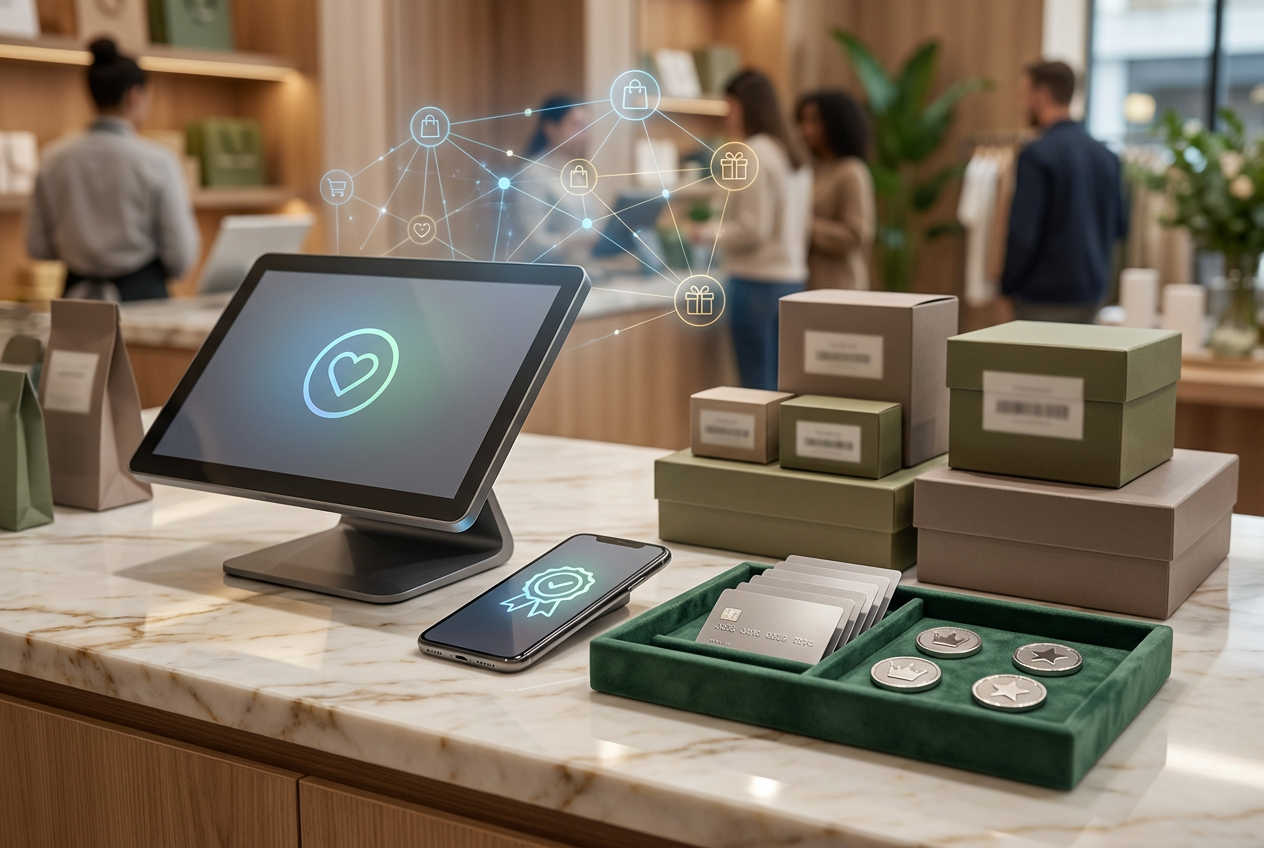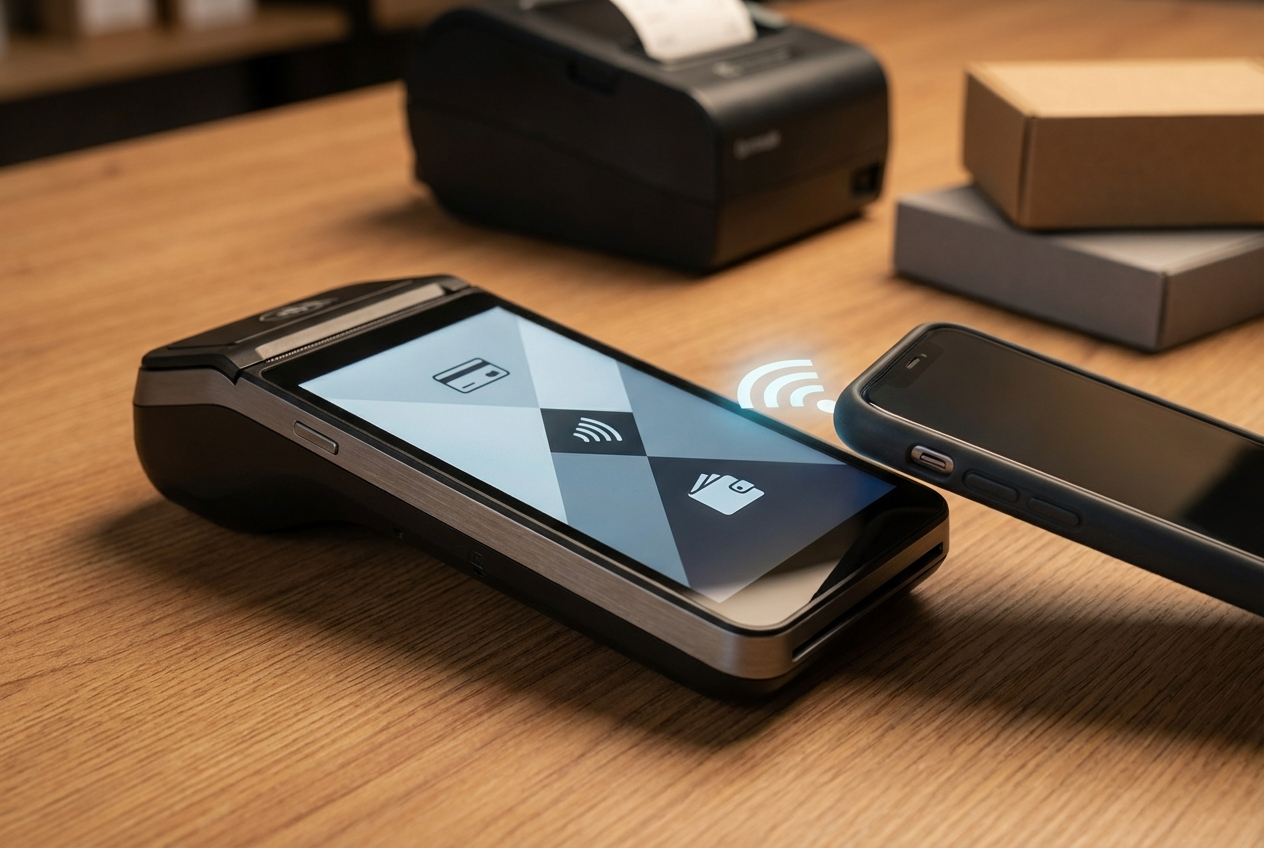Ever felt like keeping track of your inventory is like juggling in the dark? You’re not alone. Many businesses, especially retail stores and restaurants, struggle with inventory control. That’s where point of sale inventory management acts as your all-seeing, all-knowing assistant that tracks your products, sales, and stock levels in real-time. Whether you run a cozy coffee shop or a multi-location retail chain, understanding how POS inventory systems work can revolutionize the way you do business.
Ready to shine a light on your stockroom chaos? Let’s dive in.
Highlight:
- A point of sale inventory management system connects sales and stock data in real time to help retailers track inventory across locations.
- The point of sale inventory management software improves accuracy, reduces manual work, and gives better visibility into product performance and stock levels.
Overview of Point of Sale Inventory Management
Point of sale inventory management refers to the process of tracking, managing, and analyzing stock levels at the exact moment a sale is made, right at the POS. This system links the sales process directly with inventory updates, meaning you always know what’s in stock, what needs restocking, and which products are performing best. It helps businesses optimize operations, prevent stockouts, and make smarter decisions based on accurate, real-time data.
When automating inventory tasks and connecting them with sales data, a POS inventory system becomes the brain of your retail or service business.
Advantages Offered by POS Inventory Management
Switching to a point of sale inventory management system brings a whole new level of efficiency to your business. Immediate and long-term benefits include improved customer experiences and easier inventory tracking.
Let’s dive into the specific advantages that make these systems a game-changer for retailers and service providers alike.
- Streamlined Inventory Control
Manual inventory tracking is tedious and prone to errors. A POS system eliminates the need to count stock daily and reduces reliance on guesswork. Instead, it automatically updates stock levels whenever a sale is made or a return is processed. This guarantees you always know what’s available, no more overselling or disappointing customers.
With point-of-sale inventory management, your inventory records are always up-to-date, accurate, and accessible from anywhere, provided your system is cloud-based. This leads to better inventory planning and minimizes waste from unsold or expired products.
- Real-Time and Precise Sales Monitoring
Imagine having a dashboard that shows you what’s selling and what’s not, updated every second. That’s the power of real-time monitoring in a POS system.
Each transaction updates your sales reports instantly, allowing you to see trends as they happen. Are black sneakers flying off the shelves? Do sales spike after 5 PM? With point of sale inventory management solution, you can make swift, informed decisions based on live data.
►►► Optimal solution set for businesses: Multi store POS, Next-gen POS, Inventory Management Software (MSI), Self Service, Automation, Backorders
- Enhanced Customer Experience
When customers come in looking for a product, they expect it to be available. And when they check out, they expect it to be quick. A POS system improves both these experiences.
By maintaining an accurate inventory count, you can confidently serve customers and reduce wait times at checkout. Features like barcode scanning, customer purchase history, and digital receipts help create a fast, efficient, and personalized shopping experience, keeping customers satisfied and returning.
- Boost in Overall Profit Margins
Poor inventory management can cost you literally. Overstocking ties up capital, while understocking leads to missed sales. A POS system finds the sweet spot by tracking product performance and suggesting optimal reorder points.
Point of sale inventory management allows you to minimize loss, avoid over-purchasing, and decrease manual labor costs. The result? You save money, maximize sales, and increase profitability across the board.
- Easier and More Accurate Financial Management
Trying to balance your books without clear data is like trying to solve a puzzle with missing pieces. A POS inventory system offers built-in reporting features that help track revenue, expenses, and even taxes with pinpoint accuracy.
It simplifies end-of-day reconciliations, tax filings, and audits, cutting the need for manual accounting. With real-time financial insights, you can monitor your store’s performance and plan budgets more confidently.
- Smarter, Data-Driven Business Decisions
Wouldn’t you instead make decisions based on facts instead of gut feelings? POS systems provide detailed analytics and reports on sales, inventory, and customer behavior. You’ll know your best-selling products, slow-moving items, peak business hours, and more.
Point of sale inventory management empowers business owners to act on data, not guesswork, leading to better marketing, smarter stocking, and improved customer service strategies.
Key features of Point of Sale Inventory Management
Not all POS systems are created equal. The right features can make a big difference in your daily operations. Let’s explore the must-have functionalities of a practical point of sale inventory management system.
- Real-time inventory tracking
One of the most significant features of a POS inventory system is real-time tracking. This means your inventory levels update instantly with every sale, return, or restock.
You no longer need to wait for end-of-day reports to know what’s in stock. Real-time updates help avoid stockouts, overstocking, and customer disappointment. With accurate inventory visibility, you can make smarter decisions about purchasing and promotions.
- Sales reporting
Sales reporting provides deep insight into your business performance. A quality point of sale inventory management system comes with built-in reporting tools that show what’s selling, when, and how fast.
These reports help you identify your best and worst-performing products, peak sales hours, and seasonal trends. With this data at your fingertips, you can optimize your product range and boost profitability.
- Automatic alerts
Automatic alerts guarantee that you never run out of your most important products. Your POS system can notify you when stock levels drop below a set threshold or when an item hasn’t sold for a while.
These alerts help you stay proactive, so you’re always prepared for restocking or running special promotions to clear slow-moving stock.
Barcode scanning optimizes the checkout process and smooths inventory accuracy. Instead of manually typing SKUs, your staff can simply scan items, resulting in faster and error-free transactions.
In terms of inventory management, barcode scanning streamlines the process of receiving stock, conducting audits, and managing product data.
Managing inventory across locations can be challenging if you operate more than one store. A good point of sale inventory management system allows centralized control of multiple outlets from one dashboard.
You can transfer stock between stores, track each location’s performance, and secure consistent inventory data without switching systems.
Factors to Consider for A POS Inventory Management System
Choosing the right point-of-sale inventory management system can make or break your business operations. With numerous systems available on the market, it’s essential to look beyond basic features and evaluate which one best fits your business needs.
Before investing in a POS system, consider these factors to ensure it aligns with your business goals, budget, and operational needs.
Budget
Every business, whether a small boutique or a large retailer, needs to stick to a budget. While a feature-rich point-of-sale inventory management system might seem attractive, it’s essential to weigh the cost against the actual value it brings.
Some systems have a one-time purchase price, while others operate on a subscription model (monthly or annually). Don’t forget to factor in hidden costs, such as hardware, upgrades, training, and support.
What to consider:
- Upfront vs. recurring costs
- Pricing tiers based on features
- Total cost of ownership, including hardware and support
- ROI potential from time and cost savings
Tip: Begin with a system that meets your current needs but allows for future upgrades as your business expands.
Ease of use
Your POS system should be easy to learn and operate for you and your staff. A user-friendly interface saves time on training and minimizes the chances of costly errors during sales or inventory updates.
A complicated system might seem powerful, but it can slow down your operations and frustrate employees. Look for clean navigation, intuitive dashboards, and helpful tutorials.
What to consider:
- Simple and intuitive user interface
- Training time required for staff
- Mobile or tablet-friendly versions
- Demo or free trial availability
Tip: Try the demo or ask for a walkthrough to see how easy it is to use the core features.
Customer support
Even the best POS systems may face technical issues or require help with setup and customization. That’s where reliable customer support becomes vital.
Excellent customer service can mean the difference between a quick fix and a long downtime that affects your sales and inventory accuracy.
What to consider:
- Availability: 24/7 or business hours?
- Support channels: phone, email, live chat, or ticket system
- Knowledge base or help center access
- Customer reviews on support responsiveness
Tip: Look for a vendor with a proven reputation for responsive and helpful customer service, especially if you’re not tech-savvy.
Integration with other tools
A point of sale inventory management system doesn’t operate in isolation. It should easily integrate with other tools you already use, such as your accounting software, eCommerce platforms, marketing tools, or CRM system.
The ability to connect different parts of your business saves time, eliminates manual data entry, and provides a more comprehensive view of operations.
What to consider:
- Compatibility with existing business tools (QuickBooks, Shopify POS, WooCommerce POS, etc.)
- API access for custom integrations
- One-click sync for online and offline sales
- Automation of data transfer between systems
If you’re looking for a solution that excels in this area, ConnectPOS is a leading example of a POS system built for smooth integrations. It supports direct, native integrations with popular platforms, including Shopify, WooCommerce, BigCommerce, Magento POS, and accounting tools such as QuickBooks. This means less technical setup and more efficient workflows right from the start.
With ConnectPOS, you also get real-time synchronization between your offline and online stores, ensuring that your inventory levels, customer data, and transaction history are always up to date across all channels. It also offers API access for custom development, allowing even more flexibility for businesses with specific needs.
Tip: Ask the vendor for a list of native integrations or how their API works if you use unique software.
FAQs: Point of Sale Inventory Management
- What is the main purpose of POS inventory management?
The primary purpose is to track inventory levels, record sales transactions, and provide insights to streamline business operations and boost profitability.
- Can a small business afford a POS inventory system?
Absolutely! Many POS systems are priced affordably and offer scalable features. Even basic plans can provide powerful tools for inventory control.
- How does a POS system automatically update inventory?
When a sale is made, the system automatically deducts the sold item from your stock levels and updates your inventory records in real-time.
Conclusion
In sum, a point of sale inventory management system is the backbone of efficient, modern retail. It’s a strategic asset that systematizes operations, reduces errors, enhances customer experiences, and drives smarter business decisions.
Ready to simplify your operations? ConnectPOS offers robust inventory management with seamless integrations, real-time updates, and multi-channel support. Contact us today to find the perfect solution for your business.
►►► Optimal solution set for businesses: Shopify POS, Magento POS, BigCommerce POS, WooCommerce POS, NetSuite POS, E-Commerce POS



